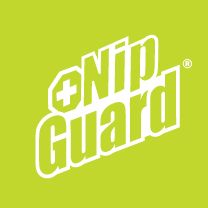2 months and counting till my race! And still lots of training of training ahead. And as it is with any new sport someone takes up, there can be steep learning curve. There can be a lot of new things to learn and think about as we train. Triathlons are no exception to this circumstance. From the past 4 months of training, there are three things that I’ve learned one should not underestimate during a triathlon.
1. Nutrition: Whether you are racing in a tri-a-tri or a half ironman, you’re burning a lot of calories. When some races can last over 10 hours, it is incredibly important to replenish your calories and fuel your body. Not only will your body will appreciate it, but it will definitely increase your performance during a race, like potassium, which prevents cramps.
It’s important to start adding nutrition during training so that your body becomes familiar with digesting while on your bike or run. Most races have aid stations and can provide you with a lot of the nutrition you need, but if you’re not sure, always pack it on you.
When I started training, my triathlon racing friend, Meghan, told me that when nutrition is your fourth sport during an ironman, and it’s just as important as the the other three sports.
2. Transitions: With three activities, each triathlon will have two transitions. These transition zones can be an easy time saver or time killer. Transitions are all about efficiency to move smoothly from one activity to the next. Simple things, such as untying your running shoes, leaving your helmet unbuckled or laying out a towel to dry your feet can save you valuable minutes that you would otherwise spend scrambling to collect yourself as you prepare for the bike or run.
Transitions are so important that it should be incorporated into training. Most people are not familiar with riding while soaked from swimming. And getting off the bike and transitioning to the run can make your legs feel like lead. For myself, it can take almost 2 kilometres after my bike ride to find my proper cadence for my run. Planning and practicing your transitions are an easy way to prepare yourself and know what to expect as you move from each section of your race.
3. Chafing: The greatest pain I feel while training is not in knees or ankles as one might expect. Instead it is my nipples. Yes, my nipples. As soon as I begin running beyond 10k, I received burning sensation on my chest. I can only imagine the pain I will feel after 7 hours of racing, if I don’t prepare for the chafing.
There are a few solutions to painful chafing. One of the most common is body glide, an anti-chafing and anti-blister balm. Body glide is also useful chafing on your feet, thighs and arms. Another solution is tape, or the runner specific Nipguards, an adhesive nipple tape intended to stop chafing on your chest during a race (Here’s a link if you don’t believe me: http://www.runguards.com/products/nipguards). Although it might sound weird, tape or Nipguards, are a godsend for long runs, and it allows me to run chafe free!
—–
As for my fundraising, I’m proud to announce that I’ve raised over $200! Only $1300 to go.
If you’re still interested in donating here is the link: worldvisioncan.akaraisin.com/livelikealex/triingforalex
Thanks for all the love and support 🙂
-Jon

